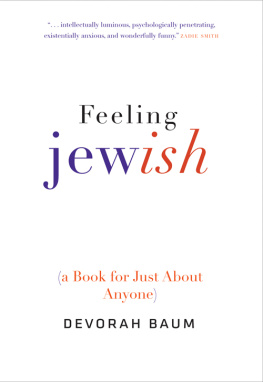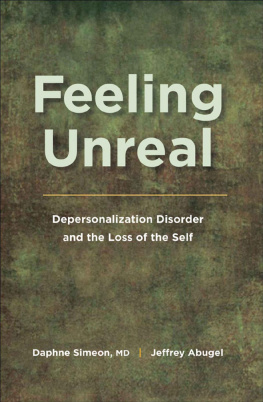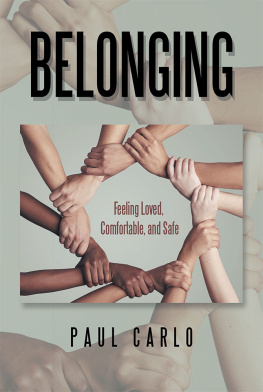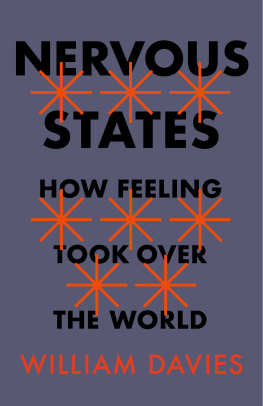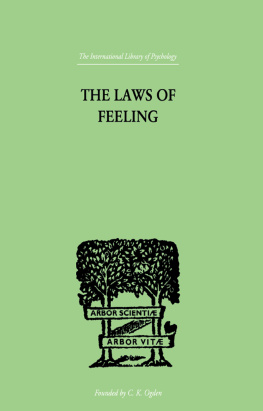Hirschkind - The Feeling of History
Here you can read online Hirschkind - The Feeling of History full text of the book (entire story) in english for free. Download pdf and epub, get meaning, cover and reviews about this ebook. year: 2020, publisher: University of Chicago Press, genre: Romance novel. Description of the work, (preface) as well as reviews are available. Best literature library LitArk.com created for fans of good reading and offers a wide selection of genres:
Romance novel
Science fiction
Adventure
Detective
Science
History
Home and family
Prose
Art
Politics
Computer
Non-fiction
Religion
Business
Children
Humor
Choose a favorite category and find really read worthwhile books. Enjoy immersion in the world of imagination, feel the emotions of the characters or learn something new for yourself, make an fascinating discovery.

- Book:The Feeling of History
- Author:
- Publisher:University of Chicago Press
- Genre:
- Year:2020
- Rating:4 / 5
- Favourites:Add to favourites
- Your mark:
- 80
- 1
- 2
- 3
- 4
- 5
The Feeling of History: summary, description and annotation
We offer to read an annotation, description, summary or preface (depends on what the author of the book "The Feeling of History" wrote himself). If you haven't found the necessary information about the book — write in the comments, we will try to find it.
The Feeling of History — read online for free the complete book (whole text) full work
Below is the text of the book, divided by pages. System saving the place of the last page read, allows you to conveniently read the book "The Feeling of History" online for free, without having to search again every time where you left off. Put a bookmark, and you can go to the page where you finished reading at any time.
Font size:
Interval:
Bookmark:
Charles Hirschkind
THE UNIVERSITY OF CHICAGO PRESS
CHICAGO AND LONDON
The University of Chicago Press, Chicago 60637
The University of Chicago Press, Ltd., London
2021 by The University of Chicago
All rights reserved. No part of this book may be used or reproduced in any manner whatsoever without written permission, except in the case of brief quotations in critical articles and reviews. For more information, contact the University of Chicago Press, 1427 E. 60th St., Chicago, IL 60637.
Published 2021
Printed in the United States of America
29 28 27 26 25 24 23 22 21 20 1 2 3 4 5
ISBN-13: 978-0-226-74681-4 (cloth)
ISBN-13: 978-0-226-74695-1 (paper)
ISBN-13: 978-0-226-74700-2 (e-book)
DOI: https://doi.org/10.7208/chicago/9780226747002.001.0001
Library of Congress Cataloging-in-Publication Data
Names: Hirschkind, Charles, author.
Title: The feeling of history : Islam, romanticism, and Andalusia / Charles Hirschkind.
Other titles: Islam, romanticism, and Andalusia
Description: Chicago : The University of Chicago Press, 2021. | Includes bibliographical references and index.
Identifiers: LCCN 2020022829 | ISBN 9780226746814 (cloth) | ISBN 9780226746951 (paperback) | ISBN 9780226747002 (ebook)
Subjects: LCSH: Collective memorySpainAndalusia. | OrientalismSpainAndalusia. | Andalusia (Spain)Civilization. | Andalusia (Spain)CivilizationIslamic influences. | Andalusia (Spain)Historiography.
Classification: LCC DP302.A467 H56 2020 | DDC 946/.02dc23
LC record available at https://lccn.loc.gov/2020022829
 This paper meets the requirements of ANSI/NISO Z39.48-1992 (Permanence of Paper).
This paper meets the requirements of ANSI/NISO Z39.48-1992 (Permanence of Paper).
For Saba
The argument I explore here can be simply stated: medieval Muslim Iberia did not disappear from history with the seizure of Granada in 1492 by Christian armies, as our history books have it. Rather, forced into hiding, it continued on as an invisible warp within the fabric of Spanish society. The medieval realm of al-Andalus and contemporary Spain and Portugal, in other words, do not belong to two distant historical periods, one medieval and one modern, but cohere in a single continuous development, unbroken by the periodicities imposed by modern historiography. Signs of this anachronistic Mediterranean world are today ubiquitousevident in the expressive gestures of contemporary Andalusians, in the imprint of Arabic left on the Spanish language, in architectural and musical motifs binding one side of the sea to the other. These cultural features articulate a place and time that intersects with modern Spain and Europe but also exceeds the historical geography defined by these names, incorporating pasts and regions beyond the boundaries these names secure.
To explore this heterotopia at the edge of Europe, however, to uncover its political and philosophical traditions, its cultural and aesthetic forms, turns out to be incredibly difficult. Curiosity about it, experts in the field caution, is misguided, really just a bit of nostalgic whimsy. She who insists otherwise has caught the Romantic bug. The medieval Arabic embedded in her contemporary Spanish turns out not to be evidence of a complex inheritance but, she will be told, only an unremarkable linguistic relic, one no more significant than the linguistic fusions common in other modern languages. Her discovery that the gestural vocabulary of her hands is mirrored back to her from the other side of the Mediterranean in present-day Morocco is not evidence of an ongoing history of exchange and circulation but simply her indulgence in a well-worn Orientalist practice, that of holding up a southern mirror to Europes northern face. And when she hears medieval fusions of Arabic, Jewish, and Roma musics resonating in the cry of the flamenco singer, she has not finally moved beyond the narrow walls of European nationalisms but is instead unwittingly seized by a most nationalist of emotions, one forged by the early twentieth-century Andalusians who invented a musical past to legitimate their claims for regional autonomy. At each step away from Spain and its conceptual and genealogical anchorage in Europe, she winds up back where she started, chastised as another naf, spellbound by the fantastical images produced by the play of mirrors between East and West, North and South. This lifeworld, she will be taught by the leading experts on the topic, was only and ever the fictive product of a Romantic imagination, an Orientalist fantasy sold like a trinket to tourists and nostalgists.
Despite these obstacles, a small number of men and women, a society of appassionati , train themselves to recognize the subtle outlines of this shifting lifeworld. To do so they cultivate and promote new perceptual habits, often through a sustained engagement with medieval Iberian history, with Andalusi aesthetic traditions, and with the cultures of the modern Middle East, with which they find a deep kinship. Scavengers of a weathered and damaged text, they assemble the shards of sense they find in ancient monuments, in etymologies, in gestures, in names, and in music, drawing these fragments of the past into a lived inheritance so as to mend the fabric that binds al-Andalus to Andalusia. The Alhambra, Granadas famed Nasrid Fort, forms a powerful material anchor. In its mystical arabesques they intuit the lineaments and underlying principles of an aesthetic regime that suffuses and conjoins past and present. It is music, however, more than any other genre, that equips them to navigate the divide between medieval and modern, to hear and feel the resonances that give unity to this territory. And though they will often approach this anachronistic world along a route paved by the idealized images of Spains Romantic poets and Orientalist artists, they attune themselves to not be lured into the dead ends to which these roads have so often led.
For those equipped with the requisite sensibilities to inhabit this world, it is not some aesthetic vacationland but a historical fact illuminated by and corresponding to the challenges of our present political moment, particularly the hardening of lines between Europe and the Middle East and between Europeans and the North African immigrants in their midst. They are confronted daily with countless editorials comparing the arrival of Muslim immigrants into the country with the Muslim conquest of 711 and warning that Spaniards once again are being called on to defend Europes southern border. The violence and paranoia of the Inquisition, they find, are alive and well in fortress Europe.
In this book I examine the lives of some of those who have explored this lifeworldforged at the hinge of the medieval Muslim kingdoms of al-Andalus and present-day Andalusiaand who have advocated on its behalf, a group I will refer to as andalucistas . This tradition is founded on a seemingly simple principle: that contemporary Andalusia is linked in vitally important ways with al-Andalus (medieval Islamic Iberia) and that the challenges faced by Andalusians todayand by Europeans more broadlyrequire a recognition of that historical identity and continuity. Al-Andalus, in this formulation, is not a distant mirror from which to reflect on contemporary challenges, a beautiful image to inspire, but a critical dimension of our contemporary existence. The continuous erasure of this inheritance, its transformation into a museum piece by modern historical discourse, are ideological procedures designed to shore up Europes temporal and geographic borders. The task of the
Font size:
Interval:
Bookmark:
Similar books «The Feeling of History»
Look at similar books to The Feeling of History. We have selected literature similar in name and meaning in the hope of providing readers with more options to find new, interesting, not yet read works.
Discussion, reviews of the book The Feeling of History and just readers' own opinions. Leave your comments, write what you think about the work, its meaning or the main characters. Specify what exactly you liked and what you didn't like, and why you think so.







